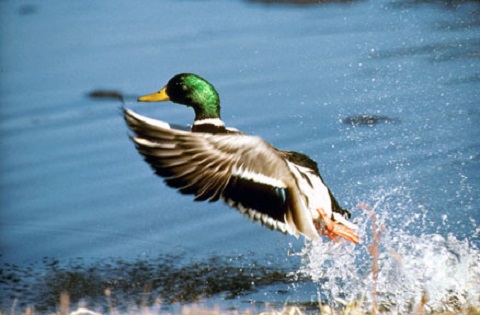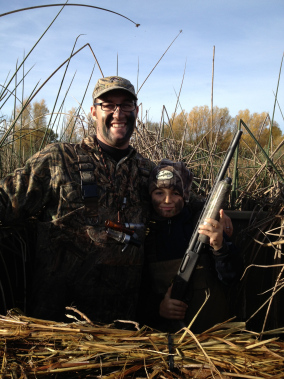Fish Report for 10-26-2016
Habitat Restoration Projects Help Waterfowl

by California Department of Fish & Wildlife
10-26-2016
Website
It might seem incongruous for the California Department of Fish and Wildlife (CDFW) to fund a habitat restoration project located somewhere outside of California. Yet, doing so is a very important part of biologists’ efforts to protect and manage the approximately 5 million waterfowl that winter in our state annually – and is a very important use of the conservation dollars provided by waterfowl hunters.
“The goal is to ensure the long-term security of the northern pintail and other duck species that winter in the Central Valley of California,” said Craig Stowers, CDFW’s Game Species Program Manager. “In order to do that, we need to consider their entire life cycle, and trace their migration all the way back to their origin. That’s why legislation and the best available science both support the use of California Duck Stamp dollars and funding through the North American Wetland Conservation Act to secure and restore additional habitat for breeding waterfowl in Canada.”
In an average year, CDFW sells almost 70,000 state duck stamps, generating about $1.3 million for waterfowl-related projects. The number of stamps sold has been relatively consistent since 1991. The majority of wetland enhancement and restoration projects supported through the state Duck Stamp Fund occur here in California, on public lands open to hunting. For the 2016-2017 fiscal year, that includes more than $1 million allocated for habitat restoration and enhancement projects at Honey Lake Wildlife Area, Butte Valley Wildlife Area, Modoc National Wildlife Refuge, Upper Butte Wildlife Area, Gray Lodge Wildlife Area, Sacramento National Wildlife Refuge, Napa-Sonoma Marshes Wildlife Area, Kern National Wildlife Refuge, Imperial Wildlife Area and Morro Bay Estuary.
But few hunters realize $2.25 of every duck stamp sold is allocated by law (California Fish and Game Code, section 3704) for the purposes of restoring habitat in those areas of Canada from which come substantial numbers of waterfowl migrating to, or through, California.
In 1972, the State Legislature implemented a mandate to use duck stamp funds in Canada in order to conserve critical waterfowl habitat in North America’s breeding grounds. This legislation looked to the future of waterfowl populations and directed CDFW (then known as the California Department of Fish and Game) to spend these moneys wisely and seek out matching funds to get as much conservation work done as possible. Those matching funds come both from CDFW’s conservation partners and the federal government via the North American Wetlands Conservation Act.
This year, duck stamp dollars marked for Canadian wetland and upland conservation projects will go to the King Conservation Easement in Alberta. This is a key breeding area for pintail and is in need of wetland and upland habitat protection. The Duck Stamp Fund will contribute $155,000, with the rest provided via federal match, to protect approximately 48 acres of wetlands and 592 acres of uplands. This particular easement is key because it is adjacent to other conservation easements that together form a habitat range of more than 15,000 acres.
In addition to wetland restoration projects, duck stamp funds also support species-specific projects. For the 2016-2017 fiscal year, these projects will include:
- A pintail banding project that will help biologists study harvest and survival rates ($35,000)
- A mallard banding project that will provide data critical to the establishment of annual duck hunting regulations ($23,000)
- A tule greater white-fronted goose study that will use radio transmitters to collect data about this special-status species’ population, habitat use and distribution ($7,000)
- A waterfowl food study to determine the amount of calories provided by post-harvest rice and corn, and how these food sources affect waterfowl ($51,890)
Any projects that are supported by duck stamp funds are approved only with the input and analysis of waterfowl conservation groups such as the California Waterfowl Association and Ducks Unlimited. And, unlike nearly all other hunter-generated funds, state duck stamp projects must be first approved by the California Fish and Game Commission, which adds another important layer of accountability and transparency.
State Duck Stamp Dollars Support Waterfowl Population at Beginning of Their Life Cycle
More Reports

10-23-2016
The California Department of Fish and Wildlife (CDFW) and California Wildlife Officers Foundation are again co-sponsoring the annual “Passing on...... Read More

10-22-2016
Question: I am fairly new to turkey hunting and hear everyone always referring to their birds by their beards and spurs....... Read More

Website Hosting and Design provided by TECK.net